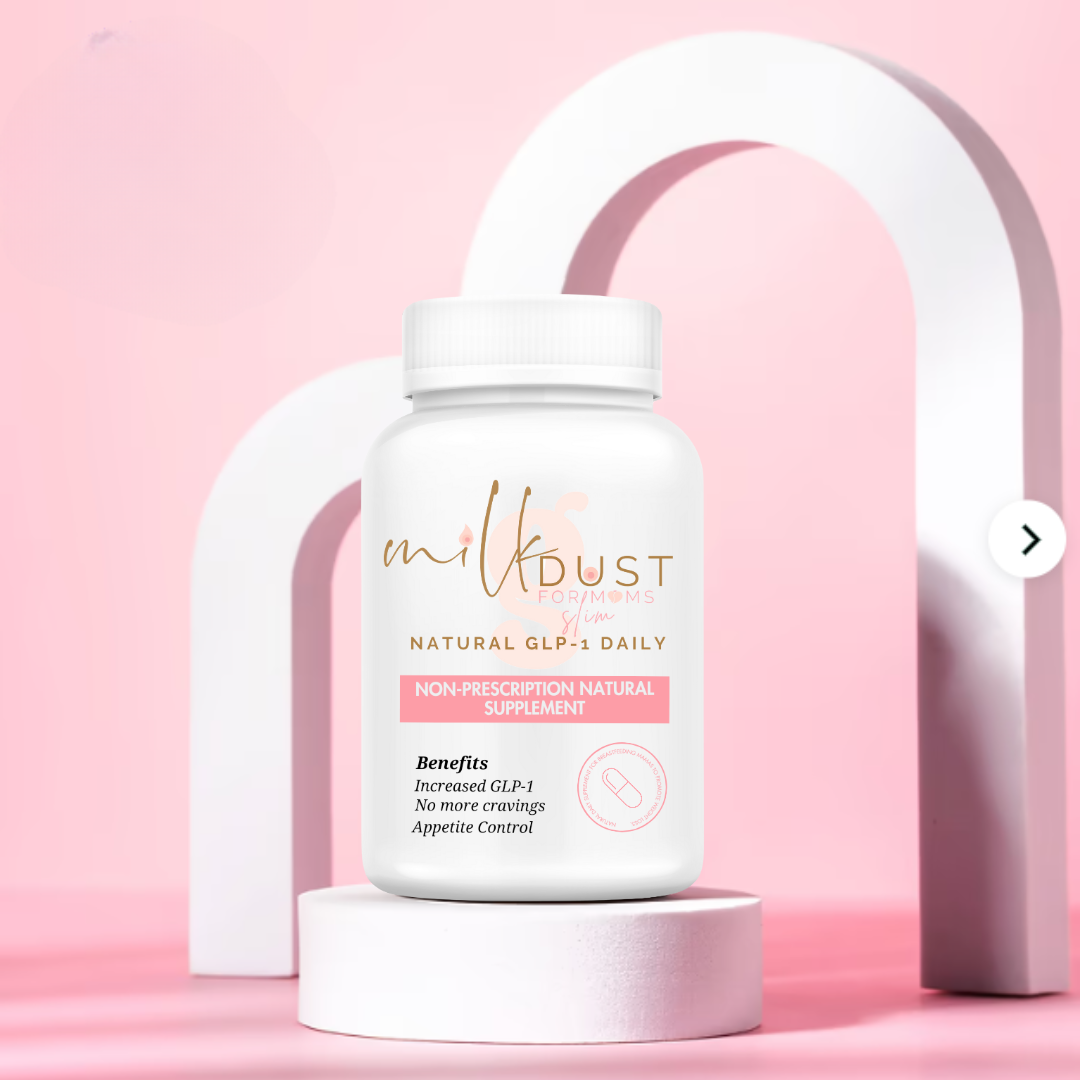Written by Andrea Tran RN, BSN, MA, IBCLC
When you are the one responsible for producing your baby's food, you want to do the best job that you can. One of the most common concerns a breastfeeding mama has is whether she is making enough breast milk for her baby. This is despite the fact that the vast majority of new moms make enough milk for their baby's needs. In fact, it is more common that breast milk production is just perfect for baby's needs to increase birth weight in the early days and early weeks.
If you are one of those moms who has a true low supply, it is a good idea to do everything you can to increase your production and make extra milk.
Perhaps your supply has been fine, and you have just hit a bump in the road and need a little boost. For moms who work full-time, they often find their supply starts to dip by the end of the week. The truth is that there are many scenarios where a mom might want to know how to make more milk.
Whatever your reason is for wanting to increase your breast milk supply, these tips have been used successfully, time and time again.
I also have a great breastfeeding diet course that helps you lose weight safely while actually increasing your milk supply. This is exactly how I've eating and lost the weight after all four of my pregnancies, and it is the simplest way to actually lose the baby weight safely, while eating all the foods that actually boost your milk supply! I teach you exactly how to eat!! Check it out, and see if it's right for you!
Always make sure you start with good breastfeeding basics.
- A good latch ensures comfortable nursing and good stimulation.
- Frequent breast stimulation is essential. This is that whole supply and demand thing that you have heard about. The stimulation can be from breastfeeding or pumping, breast compression, power pumping or a combination. There just needs to be lots of it.
- Thorough emptying of the milk. When a lot of milk is left in the breasts, it tells them to make less milk.
- It takes a lot of calories to grow a tiny human. Make sure you are eating enough quality calories. On average, you need about 500 calories above what you needed before you became pregnant. Make sure you are getting lots of protein, as well as good fats. Salmon is an excellent source of both, and Milk Dust is an amazing source of protein and quality calories.
- Keep yourself well-hydrated. Always drink plenty of water and have a water bottle near by.
2. Pumping to Increase Milk Supply
This taps into that whole supply and demand thing. More stimulation results in more milk.
- Pump within 15-20 minutes after a feeding to ensure you don’t take food away from your baby’s next feeding.
- There are no hard rules about how long you need to pump. If you only have 5 minutes, then make your pumping session for that long.
- If you have a full 15 minutes, don’t stop pumping just because you stop getting milk. The continued stimulation after your breasts are empty tell them to make more milk flow.
- Research has shown that moms who massage and compress their breasts during pumping make more milk. This is called “hands-on pumping.”
- The right size of breast flange is important for proper stimulation and emptying. Your nipples should not rub on the sides of the flange, and only a little bit of areola should be pulled in.
3. Foods That Really Increase Milk Supply
There are lots of foods that can increase milk supply. Many of them are very yummy and make tasty snacks. Overall, a healthy diet is essential to creating a healthy milk supply, and most of these foods are very nutrient dense.
- Oatmeal is great for milk production. You can use it in cookies, muffins, energy bites, bread, and even smoothies!
- The new Milk Dust Bars an are amazing, convenient snack to get in your milk-boost.
- Dates are a tasty treat that helps support milk production (Source). You can keep some in a bag in your purse for an on-the-go snack.
- Smoothies - you have to eat breakfast, so make it count. Using a smoothie mix like Milk Dust Protein Powder is going to give your supply a boost. Throwing in a handful of spinach leaves helps you get your daily dose of veggies.
- Cookies – This is my favorite one! Use foods that encourage milk production like brewer’s yeast and oatmeal. Adding some fenugreek will give it an extra boost, or a scoop of Milk Dust in the recipe. These Brownie Boobie Bites are AWESOME!
- Energy bites – dates and oatmeal make great energy bites with two foods that are good for your supply.
- Pinterest is a great place to get recipes for lactation cookies and smoothies.
Recipe: Boobie Banana Bread
If you want to solve your milk supply problems for good by correcting your nutrition and nutrient deficiencies. Nutrient deficiencies are a major cause for low milk supply, and you can fix it through the right diet program. Grab this diet program to help you fix your low milk supply, eat the right foods, and completely transform your milk supply.
Check it out now!
4. Herbal Supplements
There are single herbs, and there are blends. You can get most herbs as a tincture or in capsules. In my experience, the tinctures seem to be more effective. They do have a very strong taste, though. You can also brew them as teas.
One of the most common unpleasant side effects of herbs is an upset tummy. Begin with a low dosage and always stop taking anything that causes an allergic reaction.
- Fenugreek (main herb in Milk Dust)
- Goat’s Rue
- Shatavari
- Malunggay
- More Milk Plus
- Milk Rich
5. Essential Oils Can Be A Lifesaver!
These can be used topically with a carrier oil such as fractionated coconut oil. Take care to make sure none of it gets on your nipples. If an essential oil is labeled safe for internal use, it can be added to foods or taken in a capsule. Safety for use this way can vary according to the manufacturer of the essential oil, so always check the label.
Essential Oils that can help boost supply:
- Lavender
- Clary Sage
- Fennel
- Basil
Note: Avoid foods that can hurt your milk supply
Some foods can actually cause your supply to decrease. Avoid these while you are breastfeeding.
- Peppermint
- Sage
6. Acupuncture (a hidden trick!)
Acupuncture is something I always encourage a mom with a low milk supply to consider. Research has supported its value for increasing milk supply (Source). It has been so effective in the mamas I have worked with over the last 25 years.
Now you have lots of ideas on tips to increase your milk supply in a variety of ways. Pick the one that works best for you.
Andrea Tran is an RN and a lactation consultant (IBCLC). She has her Master’s in Health and Wellness and has been helping moms and babies breastfeed for over 25 years.
These recommendations are for general and educational purposes only. You should always check with your health care professionals regarding your situation
Prescription medication is available in situations that call for it. You may have a medical condition that needs to be treated. In this case, consulting with your health care provider is paramount to your breastfeeding success.
The Best Way to Know If Your Supply is Increasing:
After all your hard work to increase the amount of breast milk your making, it may be hard to know if baby is getting more. Here are some signs to watch for.
- Baby will gain a healthy amount of weight. If you have a good milk suply, baby will continue to gain the appropriate amount of weight according to your healthcare provider.
- Baby will have more dirty diapers. This is a key sign to baby increasing the amount of milk they are drinking. They will automatically have more wet diapers because they are eating more.
- Cluster feeding will slow down as baby is able to drink more milk at one feeding. Cluster feeding can start up again if baby is having a growth spurt, but it can help you see if you have a good milk supply.
- Consulting with a lactation specialist will also help you know if you are making plenty of milk for baby and increasing as you go
3 Common Reasons Your Milk Supply May Be Low:
If you are struggling to increase your breast milk supply, after all this work, there may be some reasons your supply isn't increasing at each nursing session.
- Insufficient glandular tissue is when the milk-making tissue of the breast do not develop properly. If this is the case, you can still use a supplemental nursing system to allow baby to feed at the breast using infant formula or donated milk.
- Polycystic ovary syndrome (PCOS) may cause challenges with breastfeeding. Research is showing that PCOS can be linked to low milk supply because of the metabolic issues and insulin resistance. Milk Dust is an amazing product for women with PCOS because it stabalizes insulin and blood sugar.
- Baby has a tongue tie. A tongue tie affects baby's latch, which doesn't allow baby to fully empty the breast. This can cause your supply to drop, and baby to struggle to get enough milk. A pediatric dentist can help identifiy and treat a tongue tie.
If you don't have any of the above issues, the good news is that you should be able to establish a full milk supply and more. The first week is the toughest, as you adjust to pumping extra, being stuck to an electric pump, or waking up in the night for feedings. It is a lot of hard work, but once your supply is established, baby's growth will be so satisfying.
Make sure to put your nutrition first, and use products like Milk Dust that offer amazing, hand-picked nutrients specifically for lactation. Sarah Schulz, a Board Certified Pediatric Nurse and Lactation Counselor states,
"This is where products like Milk Dust come in; a nourishing and tasty supplement that you can add to smoothies or baked treats to give your body the protein, vitamins, and minerals it needs to fill you up, regulate your blood sugar and promote your overall health in the transitional time of postpartum.. It also takes about an extra 500 calories per day to produce breast milk, and Milk Dust offers protein dense calories to help provide your body with that extra energy without giving you a sugar loaded crash later. Ingredients like fenugreek, Brewer’s yeast, and fennel seeds are known to support milk production, taking some of the worry out of the hard work of breastfeeding.
A protein packed smoothie to sip on from the rocking chair would have been a game changer on that infamous day of cold, uneaten lunch and I’m so thankful that a whole new market of postpartum support powered by innovative mothers seem to have emerged since I was first bringing babies home. It gives me many holistic and helpful options to direct my patients towards and reminds me that even though the village of motherhood has changed from the literal sense over many generations, there is still a network of women helping women out there and together we can optimize the health of ourselves and our babies. "











